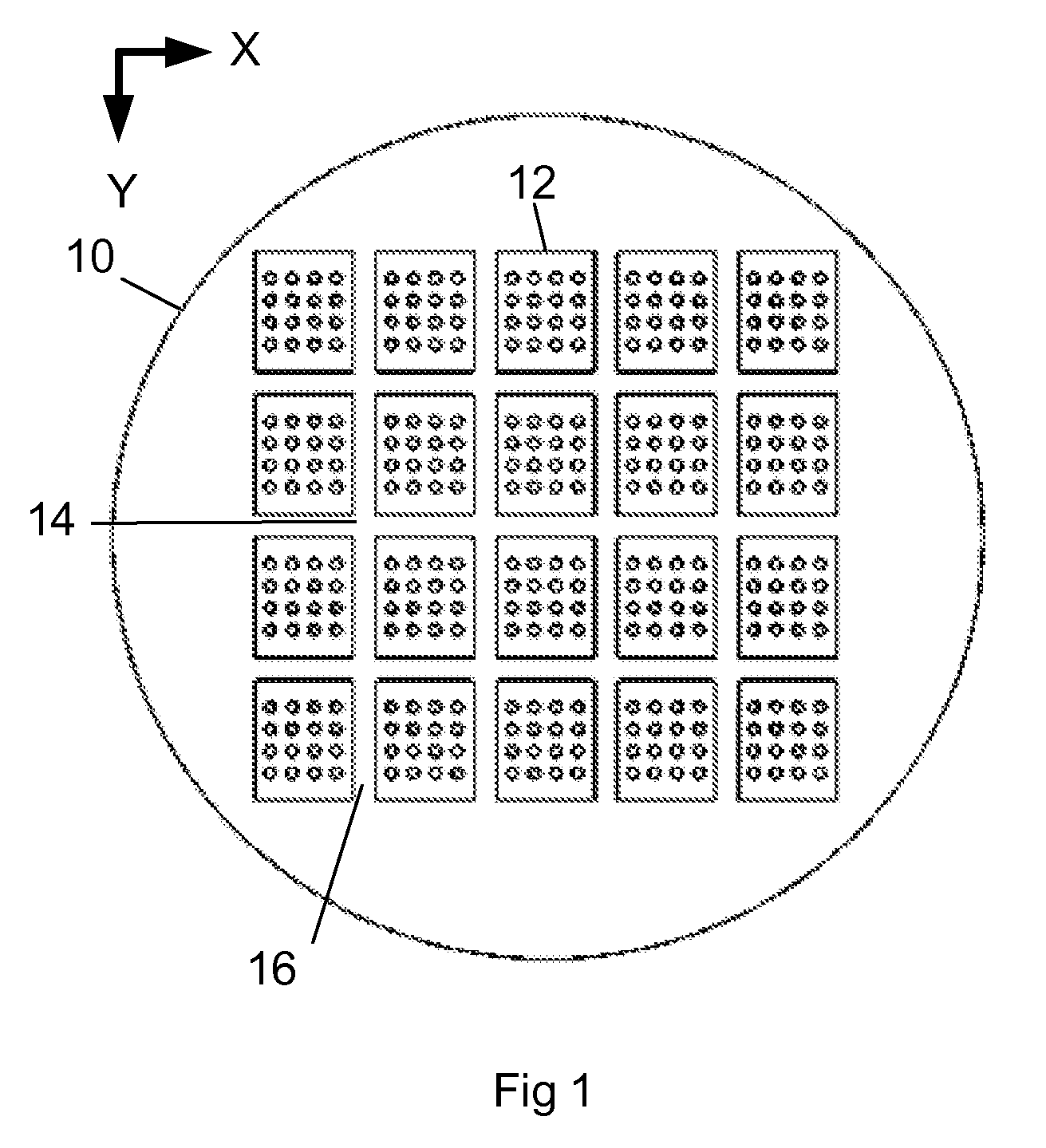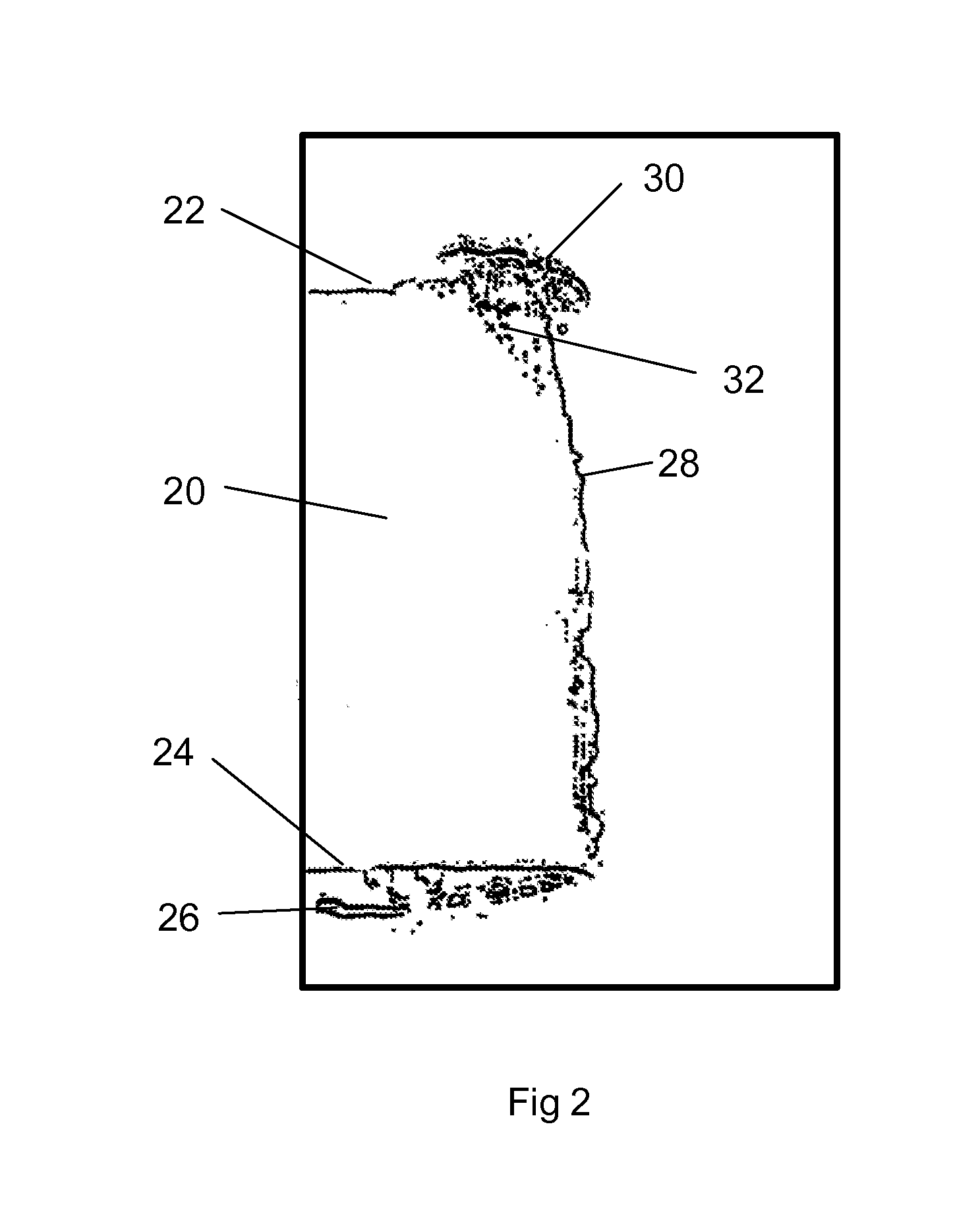Method and apparatus for laser singulation of brittle materials
a technology of brittle materials and laser singulation, which is applied in the direction of laser beam welding apparatus, manufacturing tools, welding/soldering/cutting articles, etc., can solve the problems of limiting the useful life of parts, device failure, and real estate, and achieve the effect of improving the strength of die breakag
- Summary
- Abstract
- Description
- Claims
- Application Information
AI Technical Summary
Benefits of technology
Problems solved by technology
Method used
Image
Examples
Embodiment Construction
[0024]This invention is an improved method for laser singulation of electronic devices fabricated on a substrate or wafer. An embodiment of this invention includes a laser processing system having a laser having laser parameters. This embodiment uses this laser to make a partial cut in the substrate or wafer using a first set of laser parameters. These parameters allow the laser to make the desired cut in the wafer or substrate with an acceptable kerf width and at an acceptable rate without creating unacceptable HAZ or re-deposited debris. This embodiment then cuts the wafer or substrate with a laser using second set of laser parameters adjacent to the first cut. Making the second cut adjacent to the first cut allows the debris cloud from the substrate or wafer to being cut to dissipate into the volume of the first cut, thereby reducing the deleterious effects associated with heating the debris cloud with subsequent laser pulses. Workpieces machined in this fashion exhibit improved ...
PUM
| Property | Measurement | Unit |
|---|---|---|
| wavelength | aaaaa | aaaaa |
| speed | aaaaa | aaaaa |
| spot size | aaaaa | aaaaa |
Abstract
Description
Claims
Application Information
 Login to View More
Login to View More - R&D
- Intellectual Property
- Life Sciences
- Materials
- Tech Scout
- Unparalleled Data Quality
- Higher Quality Content
- 60% Fewer Hallucinations
Browse by: Latest US Patents, China's latest patents, Technical Efficacy Thesaurus, Application Domain, Technology Topic, Popular Technical Reports.
© 2025 PatSnap. All rights reserved.Legal|Privacy policy|Modern Slavery Act Transparency Statement|Sitemap|About US| Contact US: help@patsnap.com



